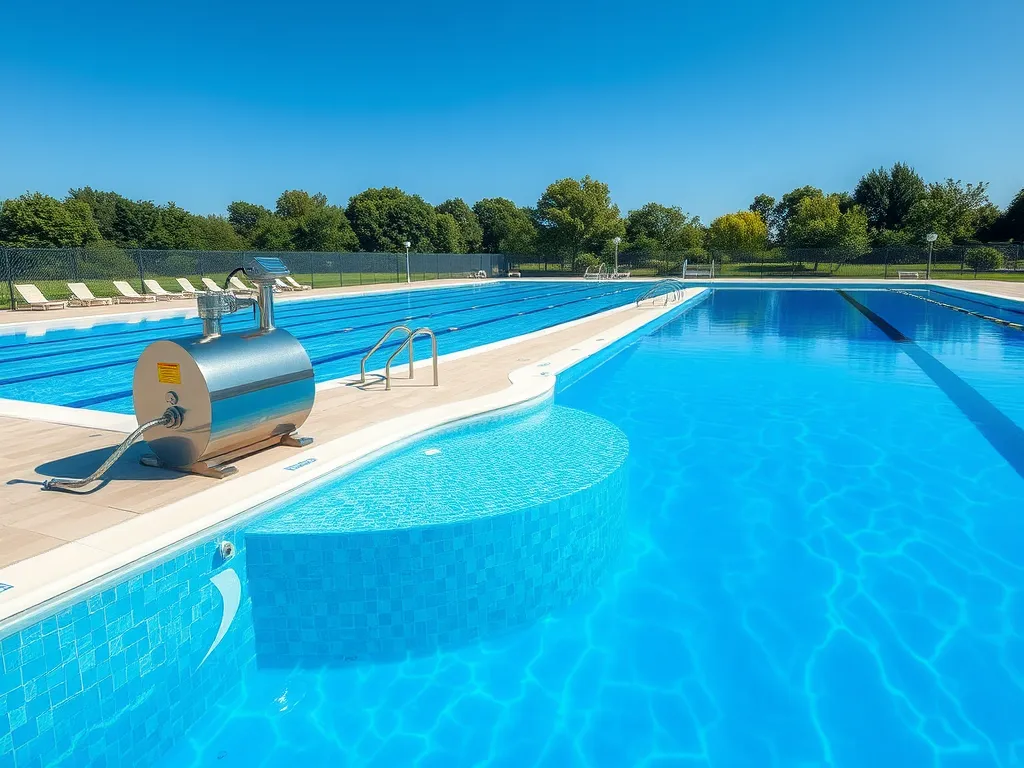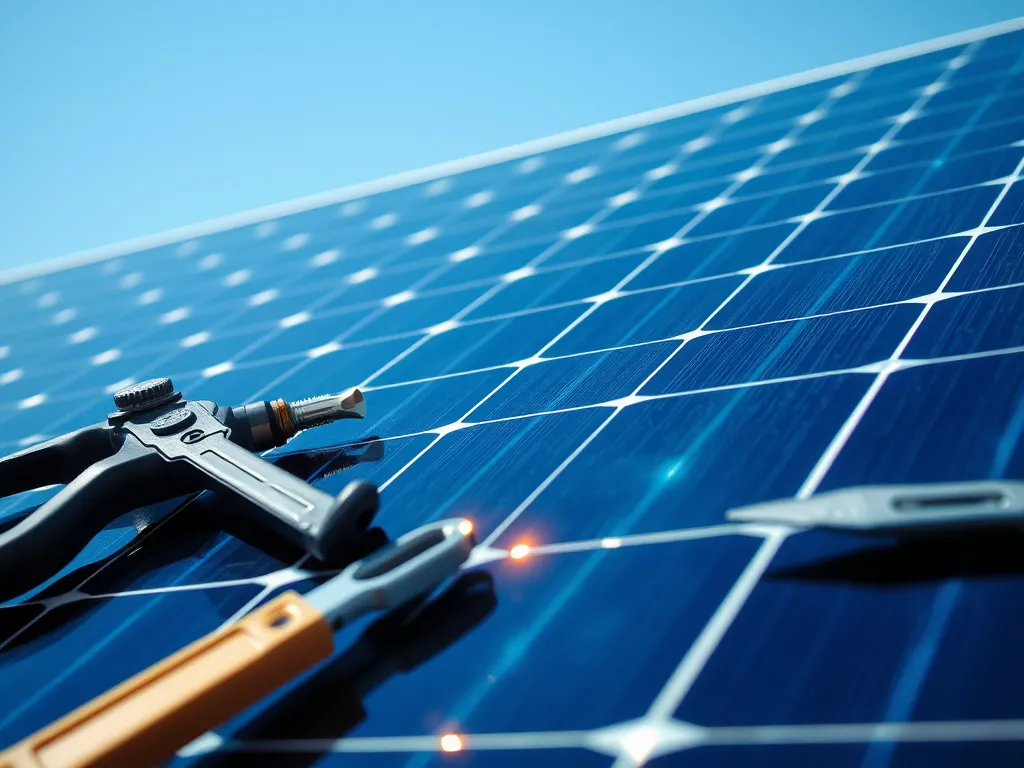How to Choose the Right Saltwater Generator Size
Published on: April 29, 2025 | Last Updated: April 13, 2025
Written By: Rachael Weatherbottom
A saltwater generator turns salt into chlorine to keep your pool clean. Picking the right size is crucial. Too small, and it won’t clean your pool well. Too big, and you waste money. The size depends on your pool’s volume and the generator’s chlorine output. We’ll show you how to calculate it easily.
Saltwater Generator Size Calculator
- Enter your pool’s total water volume in gallons
- Find your generator’s chlorine output (from manual)
- Add desired daily pump run time (optional)
Factors Influencing Saltwater Generator Sizing
Selecting the correct saltwater chlorine generator size ensures efficient chlorine production and water sanitation. Oversized units waste energy, while undersized models strain to meet demand. Key variables include pool volume, usage patterns, and environmental conditions. It’s also important to know how a saltwater generator works. These systems convert salt into chlorine, providing a steady supply of sanitizer for your pool.
Pool Volume and Gallons Per Day (GPD)
Pool volume dictates the generator’s chlorine output requirements. Measure your pool’s length, width, and average depth to calculate total gallons. For rectangular pools, use: Length (ft) × Width (ft) × Average Depth (ft) × 7.5 = Total Gallons. Saltwater systems are rated by pounds of chlorine produced per 24 hours. A 40,000-gallon pool typically needs a 1.6 lb/day system. Mismatched capacity leads to algae outbreaks or corrosive chlorine levels. To keep your pool balanced, knowing the total volume is key. Calculating pool gallons accurately helps in maintaining the right chemical levels.
| Pool Volume (Gallons) | Recommended Chlorine Output (lb/day) |
|---|---|
| 10,000–15,000 | 0.5–0.7 |
| 20,000–30,000 | 1.0–1.4 |
| 35,000–40,000 | 1.6–1.8 |
| 50,000+ | 2.0–3.0 |
Bather Load and Usage Frequency
High-traffic pools require generators with 20–30% extra capacity. Frequent swimming, heavy rainfall, or debris influx increase chlorine demand. For commercial pools or those hosting events, consider systems with adjustable output settings. A residential pool used twice weekly may suffice with a 1.4 lb/day unit, while a vacation rental pool might need 2.0 lb/day.
Climate and Sun Exposure
UV radiation degrades chlorine rapidly in sunny regions. Pools in Arizona or Florida often need generators 25% larger than baseline recommendations. Conversely, shaded or indoor pools may operate efficiently with standard sizing. Monitor free chlorine levels weekly; consistent readings below 1–3 ppm signal undersizing.
Salt Concentration and Water Chemistry
Generators require 2,700–3,400 ppm salt levels to function. Low salinity reduces chlorine output, while excess salt accelerates corrosion. Test strips or digital meters verify concentrations. Systems with self-cleaning cells or reverse polarity features minimize scaling from hard water. Total Dissolved Solids (TDS) above 4,500 ppm necessitate partial drainage.
Matching Saltwater Chlorinator Size to Pool Type
Pool design impacts flow rates, plumbing configurations, and generator placement. Inground, above-ground, and commercial pools each have unique requirements.
Inground Pools
Inground pools often have higher flow rates (40–60 GPM) due to larger pumps and complex plumbing. Ensure the generator’s maximum flow rating exceeds your pump’s output. For example, a 2.0 lb/day system typically handles 60 GPM. Install unions for easy cell removal during winterization. When considering all the components that affect the operation of a pool, maintenance costs can add up quickly. This is important to keep in mind when looking at the average inground pool cost, which includes not only installation but also ongoing expenses.
Above-ground Pools
Compact saltwater systems (0.5–1.0 lb/day) suit most above-ground pools. Verify compatibility with vinyl liners, as some models emit high pH levels. Opt for vertical installation to prevent air locks in the cell. Check dimensions: units wider than 12” may not fit standard equipment pads. Keeping the salt level balanced is vital for pool health. An ideal salt level helps ensure a comfortable swimming experience and optimal operation of the saltwater system.
Commercial and Public Pools
Health codes mandate stricter chlorine residuals (3–5 ppm) for commercial pools. Multi-cell generators or systems with redundancy features ensure uninterrupted operation. For a 100,000-gallon public pool, two 3.0 lb/day units often provide adequate backup. Stainless steel components resist degradation from constant use. Maintaining the right total chlorine level is essential for safe swimming. Total chlorine pools help ensure the water remains clean and free from harmful contaminants.
Also See: Pump Run Time Calculator: Optimize Your Pump’s Time

Common Sizing Mistakes and Consequences
Incorrect saltwater generator sizing leads to equipment failure, unsafe water, and costly repairs. Avoid these frequent errors.
Undersizing for Seasonal Demand
A generator sized for spring may struggle during summer’s peak temperatures. Chlorine production rises with water temperature, but microbial growth accelerates faster. If your pool hits 85°F regularly, upgrade to a unit with 15–20% excess capacity. Choosing the right equipment can make a big difference in maintaining water quality. A salt chlorine generator is a great option for consistent chlorine production and easier pool care.
Ignoring Turnover Rates
Pool water should circulate through the generator cell every 4–6 hours. A 20,000-gallon pool needs a 3,300–5,000 GPH pump. Pairing a 1.5 lb/day chlorinator with an 8,000 GPH pump causes turbulent flow, reducing cell efficiency. Match the pump’s GPH to the cell’s flow rating. The amount of time a pool pump runs is crucial for maintaining water quality. Proper pump run time ensures effective circulation and chemical distribution throughout the pool.
Overlooking Cell Maintenance
Calcium buildup insulates plates, diminishing chlorine output. Acid washing restores performance but shortens cell lifespan. Self-cleaning models reverse polarity every 4–12 hours to shed scale. For manual cells, clean every 500 runtime hours or when output drops 30%. Keeping your pool tile free of calcium is also important for aesthetics. Clean calcium pool tile enhances the overall appearance of your swimming area.
Cost Considerations and ROI
Saltwater generators range from $500 to $2,500, with installation adding $200–$800. Larger-capacity models cost more upfront but save long-term.
| Generator Size (lb/day) | Average Cost | Lifespan (Years) |
|---|---|---|
| 0.5–0.8 | $500–$900 | 3–5 |
| 1.0–1.4 | $1,000–$1,600 | 5–7 |
| 1.6–2.0 | $1,800–$2,500 | 7–10 |
Energy Efficiency and Savings
Variable-speed pumps reduce energy costs by 50–80% compared to single-speed models. Look for generators with flow sensors that auto-adjust output. A 1.6 lb/day unit running 8 hours daily consumes ~480 watts, costing $15–$20 monthly. Lowering the energy usage of pool pumps can lead to significant savings. Monitoring your pool pump’s electricity consumption can help you find ways to use energy more efficiently.
Replacement Parts and Warranties
Cells last 10,000–15,000 hours; replacement costs $200–$800. Extended warranties (5+ years) cover cell plates and control boards. Brands offering prorated warranties after Year 3 provide better long-term value. It’s important to consider how warranty coverage can protect your investment. A strong pool warranty can save you money on repairs in the long run.

FAQs: Saltwater Generator Sizing
Why Does My Saltwater Generator Keep Failing?
Low salinity, improper pH (7.2–7.8 ideal), or undersizing cause most failures. Test water weekly. If the “Low Salt” light activates despite correct levels, clean the cell or check for obstructions.
Can I Oversize a Saltwater Chlorinator?
Yes. Oversizing allows running the system at 40–60% capacity, extending cell life. Ensure the unit’s minimum flow rate matches your pump’s low-speed setting.
How Does Pool Shape Affect Sizing?
Freeform pools with coves or waterfalls require higher flow rates to prevent dead zones. Add 10–15% capacity for irregular shapes.
Do Salt Generators Work With Solar Covers?
Solar covers reduce chlorine loss from UV exposure. Lower the generator’s output by 20–30% when using covers to avoid over-chlorination.
What Size Generator for a Saltwater Hot Tub?
Hot tubs need 0.1–0.3 lb/day systems. Look for compact models (under 10” width) with titanium plates resistant to 104°F water.
For precise saltwater generator sizing tailored to your pool’s specs, explore tools at My Pool Calculator.
Additional Resources for You:
- Tamminen, T. (2019). The Complete Pool Manual for Homeowners: A Step-by-Step Maintenance Guide. New York, NY: Skyhorse Publishing.
- XtremepowerUS 40,000 Gal. In-Ground Pool Salt Water Chlorine Generator Chlorinator System with Flow Switch and Salt Cell 90153-H – The Home Depot
- Amazon.com: Saltwater Generator
- Compare and Review Saltwater Chlorine Generator Prices and Features | DSP
- generator size?? | Reef2Reef
A pool care geek who’s been testing water chemistry since she was tall enough to reach the skimmer.
Chemical Dosage, Pool Calculators


